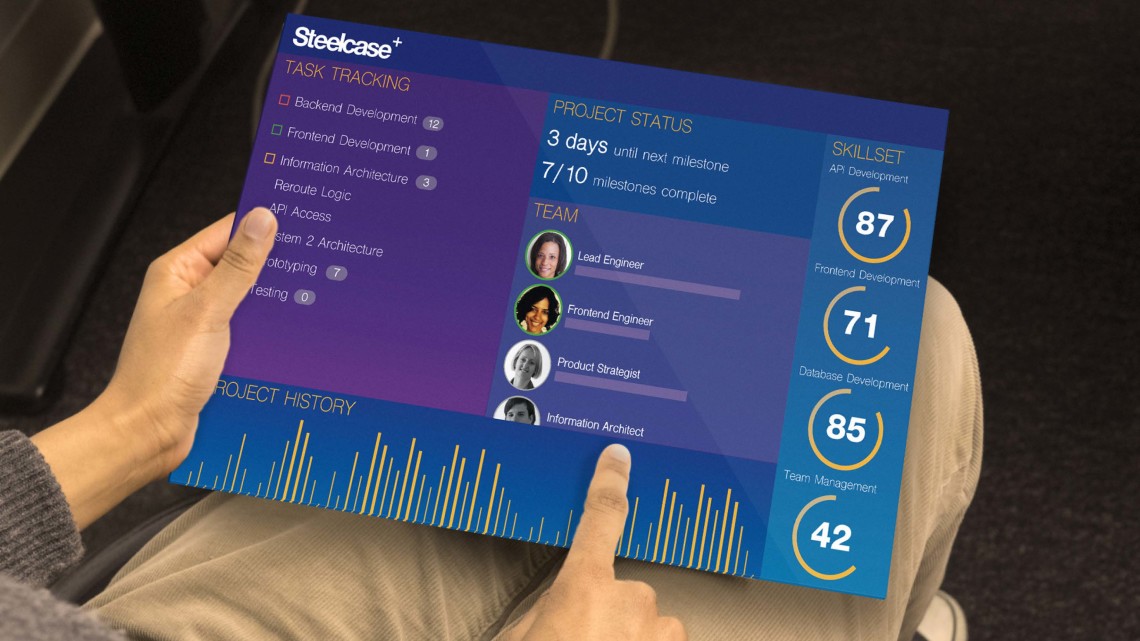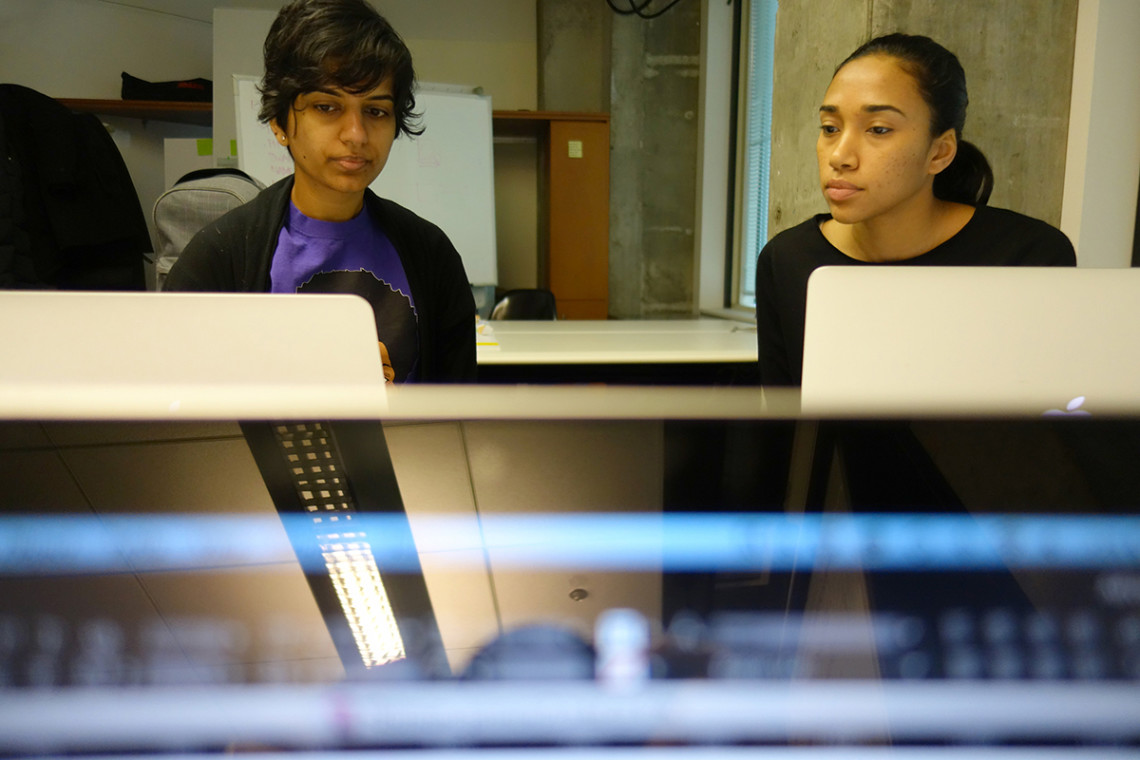

Assignment
IIT Institute of Design students won the 2015 Rotman Design Challenge at the University of Toronto, that drew teams from top design and business schools to envision Steelcase’s future in the evolving landscape of the workspace. They presented their solution to a panel of judges that included the CEO of Steelcase, members from the leadership team, as well as executives from other companies. Below is a synopsis of their winning concept.
As the sponsor, Steelcase presented the challenge:
“The world of work has changed dramatically. Organizations are faced with rapid advancements in technology, increasing complexity, the driving need to innovate, and the global competition for both customers and talent.
Describe how Steelcase, the world’s leading supplier of office furniture, and a company grounded in the research and understanding of user behavior, will continue to play to win in this evolving work environment over the next 20 years.”
In order to become indispensable to companies and workers in the future, the team proposed an end-to-end data driven platform, called “Steelcase+” that enables productivity and fulfilment by giving workers more control. Steelcase+ would accomplish this by collecting continuous real-time data, enabling team creation and project selection, and optimizing environments for productivity. This platform consists of four components: Verso, Ally, Spark, and Access.
This solution creates value for different stakeholders—people get to do meaningful work, from more convenient locations, and track their personal and career goals. Companies get the right teams to work on the right projects, and avoid redundancies through this smart integrated system. By creating this optimal balance of productivity and fulfilment, Steelcase becomes indispensable to the future of work, and moves to a higher margin business.
They also developed a business strategy to bring this solution to life and transform Steelcase’s existing business model. They looked at the roadmap over the next 20 years from a perspective of risks versus capabilities, as well as the implications on Steelcase’s P&L, over three distinct phases.
Problem
The Mission2035 team started working on the project by looking at big trends in workplaces. As they spoke to subject matter experts on the topic, they received very different opinions on where the future lies – some pointed the team towards drones and holographic communication while others were strongly of the opinion that things are going to be just the same. Secondary research gave the team wildly contrasting perspectives as well.
The problem is, when people think ‘future’, they start making predictions, and these predictions are often anchored on a distant technological bet. However, we know that people will continue to want fulfilment and companies will continue want productivity in 2035. So, as the team looked at all the opinions that lay in front of them, they thought—is there a way to think of the future in a more responsive manner?
The team went to the users and interviewed ten different workers in their workplaces—an entrepreneur at his incubator, a yoga teacher at her studio, a remote worker at home, an uber driver in his car, etc. What they learned from these conversations was that people want to have control over their lives. They want to control where they want to work (mobility), who they want to work for (independence), what they work on (creativity) and how they want to do this (collaboration).
Proposed User Experience
In order to become indispensable to companies and workers in the future, the team proposed an end-to-end data driven platform, called “Steelcase+” that enables productivity and fulfilment by giving workers more control. Steelcase+ would accomplish this by collecting continuous real-time data, enabling team creation and project selection, and optimizing environments for productivity. This platform consists of four components: Verso, Ally, Spark, and Access.
This solution creates value for different stakeholders—people get to do meaningful work, from more convenient locations, and track their personal and career goals. Companies get the right teams to work on the right projects, and avoid redundancies through this smart integrated system. By creating this optimal balance of productivity and fulfilment, Steelcase becomes indispensable to the future of work, and moves to a higher margin business.
They also developed a business strategy to bring this solution to life and transform Steelcase’s existing business model. They looked at the roadmap over the next 20 years from a perspective of risks versus capabilities, as well as the implications on Steelcase’s P&L, over three distinct phases.
Students
Radhika Srinivasan
Tara Flippin
Courtney Garland
David Pierce
Joanna Vodopivec